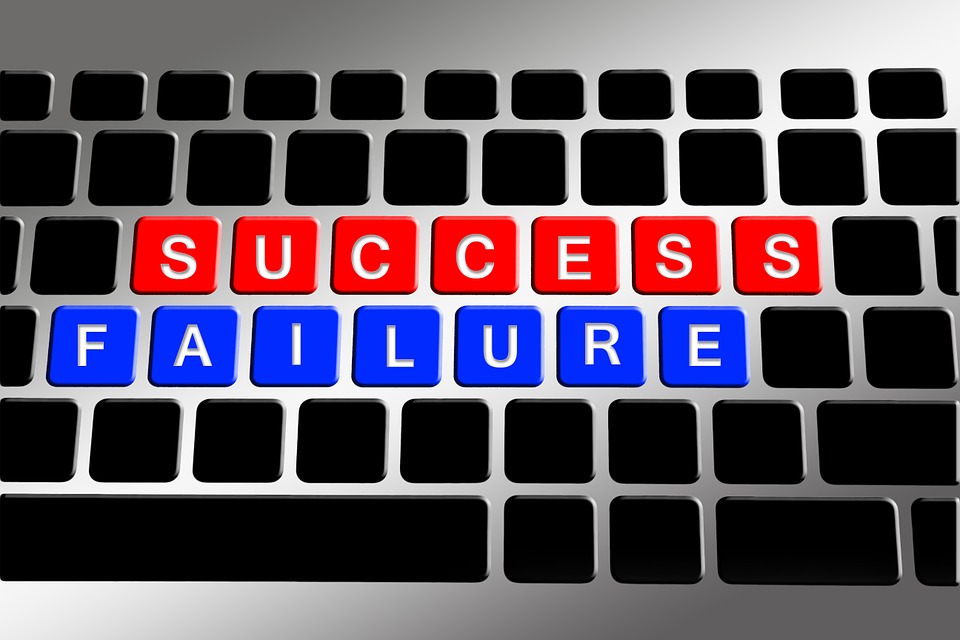Small Business Plan? – Know your Business!

Small business plan? If you are a business owner, then you should have identified a business plan to approach your industry. This is the first step to building your small business foundation. This process can be incorporated through a number of methods and techniques to ensure optimal small business success!
So, now that we have started the introduction, let’s begin on the plan.
Small Business Plan? – The S.W.O.T Analysis?
What is SWOT?
A SWOT analysis concentrates on the four components containing the acronym, permitting businesses to recognize the forces affecting a plan, motivation or action. Understanding these negative and positive elements can help businesses more efficiently convey what elements of a strategy have to get recognized.
When creating a SWOT analysis, people typically create a desk divide into four pillars to record every single impacting component side-by-side for comparison.
Strengths and weaknesses won’t normally match listed risks and opportunities, even though they need to correlate somewhat since they are tied together in some manner.

The S.W.O.T Business Relationship
Think of SWOT like your very best friend. A best friend that identifies your internal and external strength and weaknesses in order to advance your business vision.
This honest approach to your small business plan, can help identify your business strengths and real abilities.
In addition, it can uncover any flaws that you may not be aware of in your business operation.
SWOT analysis – The Questions of Small Business Plans
Below are some questions you might want to consider in your business plan.
- Strengths: Exactly what is it you and your small business idea do REALLY well?
- Weaknesses: Where are the weak points?
- Opportunities: What would be your most obvious opportunities? What could be less noticeable?
- Threats: What will be the greatest dangers you are facing?
Easy enough, right?
How does SWOT analysis help Small Business Owners?
Let’s say you are a computer software programmer, and your greatest advantage is designing responsive mobile technology. Your customer support is exceptional, and you concentrate on constructing long-term relationships with your clientele.
The unfortunate business mistake can be if you are not prepared to take on larger business accounts. Meaning, your software company internally, may not be geared for expansion.
However, following a SWOT analysis, you will understand your small business plan should pay attention to your relationship-building and layout abilities, which are just two things your competitors do not have.
Also, you will have the ability to see ways to leverage your strengths from your own flaws. The purpose is to observe your current business operation.
It is an easy exercise, but it can truly provide you a few insights you had not thought of earlier.
What are Your Small Business Strengths?
This is an important question do consider when conducting any type of business research. Other questions you might want to include in this process are the following:
• What benefits does your company have?
• What do you do better than anybody else?
• What low-cost or unique resources will you draw upon where others cannot?
• What do people in your niche view as your business strengths?
• What is your company’s Unique Selling Proposition (USP)?

Small Business Strengths?
Consider your business strengths from an inner standpoint, in addition to from the perspective of your clients and people within your own market.
If you are having trouble identifying your strengths, then consider making an inventory of your company’s characteristics, core values and operation.
Hopefully, a few of the points will probably be strengths!
Small Business Weakness?
Now that we have addressed your business strengths, let’s examine any weaknesses your small business operation may have, in order to convert and use to your business advantage.
So, below are a few questions you will want to address to help move this process forward.
What are Your Business Weaknesses?
• What would you improve?
• What should you avoid?
• What are folks in your niche going to see as flaws?
• What variables cost you revenue?
External Business Perspective?
Again, think about this from an external and internal perspective. For example, how do others view your business? What flaws do they see in your business.
These are questions that can dig below the surface to exposes any obstacles holding you back from reaching your greatest business potential.
What are Your Business Opportunities?
What great chances can you see? What intriguing trends are you aware of? Useful opportunities can come from such things like:
• Changes in markets and technology.
• Changes in government policy related to a area.
• Changes in social patterns, population profiles, lifestyles, etc..
• Neighborhood occasions.
Small Business Approach
A fantastic approach is to look at your strengths and inquire if they start up any possible business chances.
Alternately, have a look at your flaws and ask yourself if you can open up current or future opportunities by removing them.
What Are Your Business Risks?
• What barriers do you face?
• What is your competition doing?
• Are quality specifications or standards altering?
• Is changing technology threatening your position?
• Would you have bad debt or cash-flow issues?
• Can any of your weaknesses seriously threaten your enterprise?
• Setup for success!
Effective Business Owner?
Do not become an ineffective entrepreneur by neglecting to perform appropriate Market study or industry report analysis. It is hard enough to start a company but seeking to develop a company in the incorrect market… now that is a recipe for failure.
Bear in mind, if you fail to plan, plan to fail!

Small Business Thoughts? – Big Business Plans!
Now that you understand you supply amazing value to your clients, it is time to determine how much to bill or which earnings streams fit your company best.
It is very important to understand there are far more options than you may think. Were you aware that using the product that you’re bringing to the current market, is likely to permit (or lease) the rights to a bigger company and get a percentage of each sale?
You would still find your product in the Current Market, but the route you would take along with the revenue flows you create would be wholly different.
Stephen Key assembled his whole company by utilizing this process, and he has made a killing.
Ways companies generate earnings?
Asset Sale: If your client purchases your product/service, they have every right to do whatever they want with this. Have a butcher store such as: once a client purchases the meat, they’re able to do with it all their heart desires.
Utilization Fee: Depending on how much your client uses your product– the longer they use it, the more they cover. Pay As You Go Phones really are a great example. The longer minutes a client uses, the more frequently they must buy minutes.
Subscription Fees: Developed by always selling to your client each month, quarter, or year. The monthly subscription fee we pay to keep tabs on our novels through Xero is a fantastic example.
Renting/Leasing: Developed by awarding somebody exclusive right to a specific asset or part of property in exchange for a fee. A property firm that rents flats out to tenants is a frequent example.
Accreditation: Involves allowing clients consent to use your intellectual property in exchange for licensing fees. A good instance of this could be a different product programmer, such as Stephen Key, creating and leasing products out to bigger businesses.
Promotion: Developed by advertisements another organization’s service or product. By way of instance, Entrepreneur.com generates revenue by placing ads around every one of the posts.
Informed — not reinventing wheels?
Outside the Small Business Box?
Think outside the box. The Best Way of doing things might not be conventional. When you are in a position to pivot and adapt to new surroundings, you are a lot more likely to succeed as an entrepreneur.
Imagine if you owned a coffee store and provided unlimited cups of Joe to get $35 per month? Perhaps some clients would prefer paying a monthly basis. A cup of java does not cost much to create. Imagine if you had 250 loyal clients paying $35 per month as it only costs you $10 in merchandise and provides to maintain every individual’s intake?
Do a little testing. Locate your secret sauce then scale it!
Guru Suggestion: Whenever you can concentrate on passive or recurring revenue streams, take action. It is a quick and efficient method to scale a profitable business enterprise.
Construct a Buyer Persona?
Having a Business Plan and targets set up to measure progress, you are all set to proceed to raising brand awareness and visibility. You have put up your social networking plan, but have you ever thought through your communication strategy?
The best way to communicate with your audience makes all of the difference in connecting together on a profound level and building confidence, which subsequently increases transforms and visibility leads to clients.
For your viewers to trust you and be more receptive about what you state, you will need to use their language and lingo. Utilize the words that they use to discuss the issues they have raised. Know what prevents them from purchasing anything.
Know the way they search for information regarding the issues they confront based on the function they occupy in their business. Have a very clear image of exactly what keeps them up at night time.
Know where they’re in the purchaser’s journey. These elements constitute your buyer character(s), a.k.a. the folks that you help during the startup you have set.
Building Brand Awareness
In case you haven’t built your buyer character(s) however, you can begin using the next measures:
Identify their function: CEO, general manager, ending customer, head of family, etc.
Collect background information such as average age, income, and pursuits.
• Know what choices they manage.
• Know their shared objections.
• Learn who and what influences their purchase decisions.
• Know their worth and anxieties.
• Know that their goals and goals.
Get a few real quotations from interviews you have ran with target audience members (present clients are the primary ones that you need to turn to for this kind of advice).
Assembling a buyer character takes time and study, but it is well worth it. Having the ability to speak in the language that the perfect audience utilizes is tremendously valuable.

Small Business Plan – Wrapping Up
At the end of the day, you are able to break all this data down to some comparatively brief checklist.
The purpose is to roll your sleeves up and do your own homework before investing a great deal of time and enthusiasm to a nonviable small business plan.
Every one of these measures are really about optimization.
Find flaws in your merchandise, strategy, mindset and partnerships, and fortify them. Do not let unsatisfactory research stop you from pursuing your eyesight or business Fantasy!
You only have to be deliberate. Be educated!
Find Small Business Online for Sale



